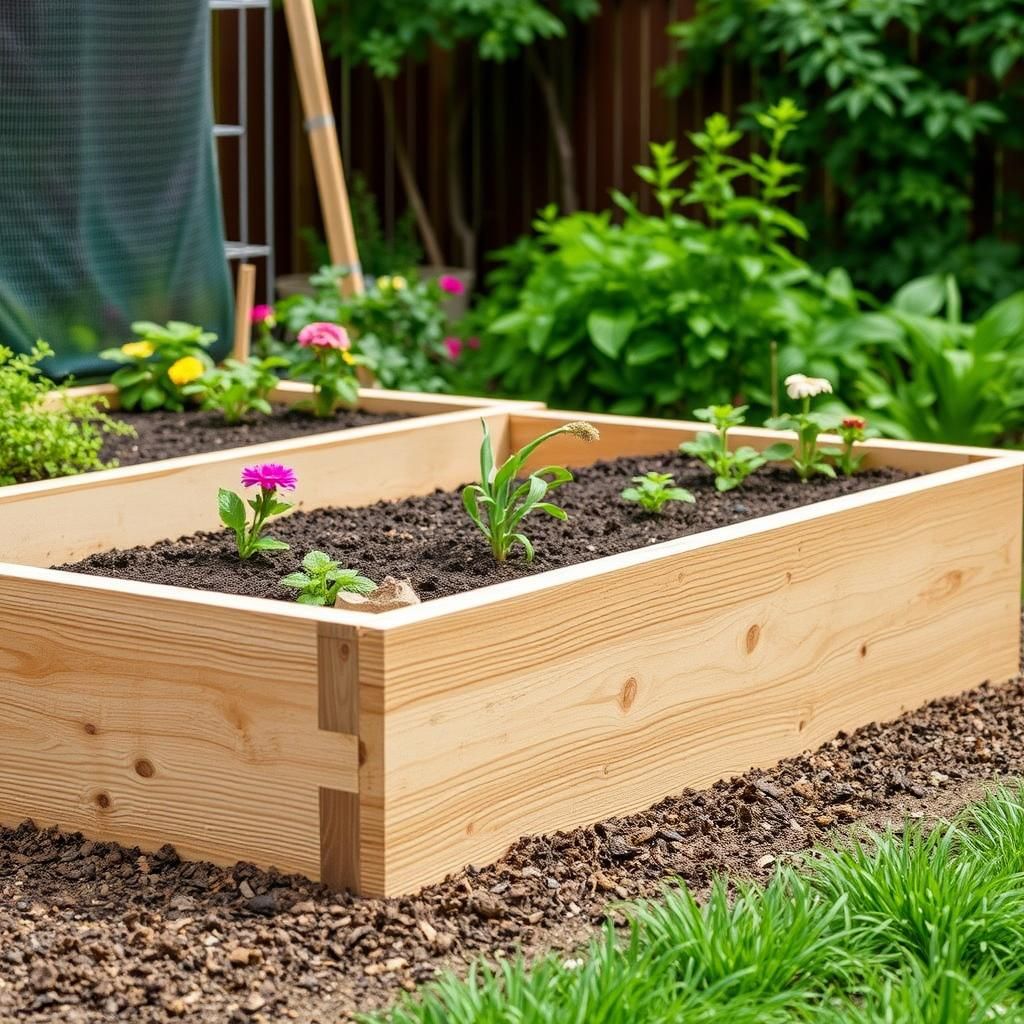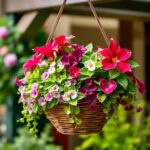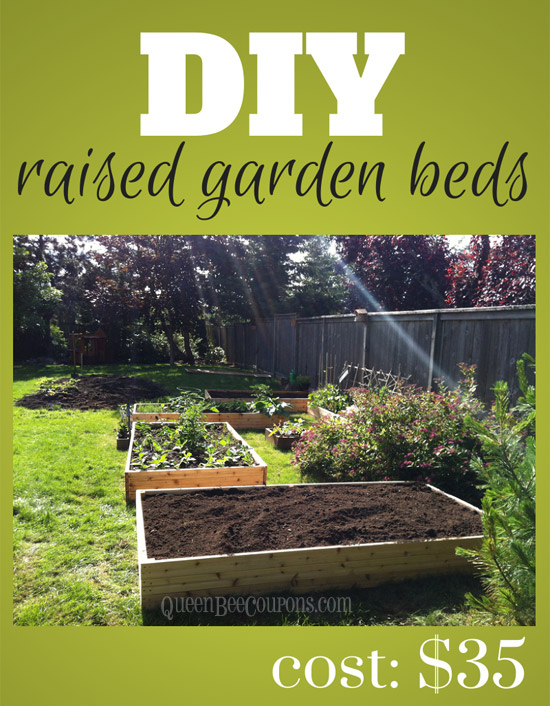Ultimate Guide: How to Make a Raised Garden Bed for Beginners

Creating a raised garden bed is an excellent way to elevate your gardening experience, especially for beginners. This structure not only enhances soil quality and drainage but also makes it easier to manage planting, weeding, and harvesting. In this ultimate guide, we will walk you through the essential steps to build a raised garden bed, from choosing the right materials and tools to selecting the perfect location. Whether you're aiming to grow vegetables, herbs, or flowers, this comprehensive resource will equip you with the knowledge and confidence to cultivate your green thumb and enjoy the rewards of home gardening.
How to Build a Raised Garden Bed
Building a raised garden bed is an excellent way to grow your own vegetables, herbs, or flowers while improving soil quality and drainage. To start, choose a sunny location with good access to water. You can use materials such as untreated wood, bricks, or concrete blocks to create the frame. The ideal height for a raised bed is 12 to 24 inches, allowing for easy planting and maintenance. Once you have the frame set up, fill it with a mixture of soil, compost, and organic matter to provide your plants with the nutrients they need to thrive. Be sure to plan for proper watering and consider adding a weed barrier at the bottom to prevent grass and weeds from invading your garden.
Choosing the Right Location
Selecting the right location for your raised garden bed is crucial for plant health. Look for an area that receives at least 6-8 hours of direct sunlight each day, as most vegetables and flowers thrive in full sun. Additionally, ensure the location has good drainage to prevent water accumulation, which can lead to root rot. Proximity to a water source is also important for convenient irrigation, making your gardening experience enjoyable and less labor-intensive.
Materials Needed
To construct a raised garden bed, you will need a few essential materials. Common options include untreated wood (like cedar or redwood), bricks, or composite materials. Make sure to avoid treated lumber, which can leach harmful chemicals into the soil. Tools you may require are a saw, measuring tape, drill, and screws or nails for assembly. Additionally, consider having enough soil, compost, and organic matter for filling your garden bed once it’s built.
Constructing the Frame
Building the frame of your raised garden bed is relatively simple and can usually be completed in a few hours. First, measure and mark the area where you want the bed to go. Cut your materials to the desired size—typical dimensions are 4 feet by 8 feet. Assemble the frame using nails or screws, ensuring that the corners are secure. For added stability, you can add corner supports or stakes if using lighter materials. Once ready, place the frame in your selected location, checking its level before filling it.
Filling the Garden Bed
Filling your raised garden bed with the right soil mix is essential for plant growth. A recommended mixture includes equal parts of topsoil, compost, and well-rotted manure. This combination provides a nutrient-rich environment for your plants. Ensure that the soil is loose and crumbly to allow for proper air circulation and drainage. Fill the bed to about an inch from the top to allow for water retention and prevent overflow during rains.
Caring for Your Raised Garden Bed
Maintaining your raised garden bed involves regular watering, weeding, and monitoring for pests. It is essential to check the moisture level of the soil, as raised beds may dry out faster than traditional gardens. Adding a layer of mulch can help retain moisture and suppress weeds. Additionally, consider rotating your crops each growing season to maintain soil health and prevent pest infestations. Schedule periodic nutrient additions through compost or fertilizers to ensure robust plant growth.
| Material | Benefit |
|---|---|
| Untreated Wood | Durable and natural; provides good drainage. |
| Bricks | Long-lasting and aesthetic; excellent thermal mass. |
| Composite Materials | Resistant to pests and weather; low maintenance. |
What do you put on the bottom of a raised garden bed?

When creating a raised garden bed, it is essential to consider what to put at the bottom to ensure optimal growth for your plants. The bottom layer can be crucial for drainage, pest control, and overall soil health. Here are some common materials and methods used to prepare the bottom of a raised garden bed:
1. Landscape Fabric
Using landscape fabric at the bottom of your raised garden bed helps to prevent weeds from growing into your garden while allowing water to drain through. This fabric acts as a barrier, ensuring that soil and roots can access moisture without the interference of unwanted plants.
See also:
- Apply a layer of landscape fabric over the bottom of the bed.
- Cut the fabric to fit snugly inside the edges.
- Staple or weigh it down to keep it in place when adding soil.
2. Wood Chips or Straw
Adding a layer of wood chips or straw at the bottom can serve several purposes. These materials help improve drainage, retain moisture, and contribute organic matter as they decompose. This method is particularly beneficial for a more natural cemetery.
- Lay down a few inches of wood chips or straw.
- Mix with a bit of soil to encourage decomposition.
- Ensure it's spread evenly across the bottom space.
3. Rocks or Gravel
Using rocks or gravel at the bottom of the bed can facilitate drainage, preventing water from pooling at the roots. This is especially important in areas with heavy rainfall or poor drainage conditions.
- Fill the bottom with a layer of small rocks or gravel.
- Consider using different sizes for better drainage.
- Level the surface before adding soil.
4. Cardboard or Newspaper
Repurposing cardboard or newspaper is an eco-friendly option for the bottom of a raised garden bed. These materials help suppress weeds and will eventually break down, enriching the soil.
- Layer several sheets of cardboard or newspaper.
- Wet them down to keep them in place and speed up decomposition.
- Trim excess material that extends beyond the edges of the bed.
5. Solid Bottom with Soil
In some cases, a solid bottom made of soil may be the best option, especially if placed on existing soil. This method allows for an unrestricted flow of nutrients and roots from the surrounding ground.
- Simply place your raised bed directly on the ground.
- Use quality soil to fill the bed for optimal growth.
- Ensure to monitor moisture levels regularly.
Is it cheaper to buy or build a raised garden bed?

When considering whether it is cheaper to buy or build a raised garden bed, several factors come into play. The cost-effectiveness of each option depends on the materials used, the size of the bed, labor costs (if any), and personal preferences regarding aesthetics and durability. Let's delve into each aspect to provide a clearer comparison.
Cost of Materials
The cost of materials is one of the primary factors influencing whether it is cheaper to buy or build a raised garden bed.
- Purchased Beds: Pre-made raised garden beds typically use treated timber, composite materials, or galvanized metal, which can range in price significantly based on quality.
- DIY Options: When building, you can choose from various materials, including reclaimed wood, which may be lower in cost, or more expensive options like cedar, which is naturally rot-resistant.
- Additional Supplies: Don't forget the cost of other supplies, such as soil and drainage materials, which will be necessary for both options and can add to the total cost.
Labor and Time Investment
Another essential factor in determining cost is the labor and time investment required for building versus buying.
- Buying Pre-Made Beds: This option usually requires minimal effort; you simply purchase and position your bed in your garden, saving time and avoiding labor costs.
- DIY Construction: Building your own bed can be rewarding but typically requires significant time and effort, especially if you are inexperienced or opt for complex designs.
- Skill Level: Your skill level affects the labor cost; a skilled handyman may complete a project quickly and efficiently, while an inexperienced builder may face delays and challenges.
Customization and Aesthetics
Customization and aesthetic considerations also play a role in deciding between buying and building a raised garden bed.
- Pre-Built Options: Ready-made beds come in standard shapes and sizes, limiting customization, but they often feature attractive designs that can enhance your garden.
- Custom Builds: Building lets you tailor dimensions and select materials to fit your garden's exact needs and aesthetic preferences, potentially leading to unique designs.
- Long-Term Aesthetic Values: A well-built garden bed using high-quality materials may yield better aesthetic results and last longer, thus impacting the value of your garden over time.
Durability and Longevity
When considering whether to buy or build, durability and longevity are crucial to analyzing the overall cost.
See also:
- Portability: Pre-made beds are often lighter and easier to move, but may not withstand environmental pressures as well as a solidly constructed DIY option.
- Material Quality: Buying might provide wood treated for outdoor use, but building with durable materials like cedar or using protective finishes can ensure longer life.
- Maintenance: The more durable the materials used, the less maintenance required over time, which can be considered a long-term savings factor.
Environmental Considerations
Lastly, it’s essential to consider the environmental impact of your choice when deciding whether to buy or build a raised garden bed.
- New Materials: Purchasing pre-made beds usually involves using new materials, which can be less sustainable compared to building with reclaimed or recycled wood.
- Waste Reduction: Building can allow you to utilize leftover materials from other projects, thus minimizing waste.
- Sustainability Goals: If having an environmentally friendly garden is a priority, consider local sourcing or sustainable materials for your built garden bed to reduce your carbon footprint.
What kind of wood should you use for raised beds?

When selecting wood for raised garden beds, it's important to consider durability, safety, and environmental impact. Here are common types of wood used:
Cedar
Cedar is one of the best choices for raised beds due to its natural resistance to rot and insects. It contains compounds that repel pests and has a long lifespan, often lasting over 10 years without chemical treatments. Additionally, cedar does not warp or crack easily, maintaining structural integrity.
- Durability: Lasts longer than many other wood types.
- Pest resistance: Naturally resists insects.
- Minimal chemical treatment: Safe for growing vegetables.
Redwood
Redwood is another excellent option for raised beds, known for its durability and resistance to decay. Similar to cedar, redwood contains natural oils that fend off insects. While it is more expensive, many gardeners appreciate its aesthetic appeal and longevity.
- Aesthetic appeal: Beautiful rich color.
- Decay resistance: Can last up to 20 years.
- Environmental considerations: Use sustainably sourced redwood.
Pine
Pine is a more economical choice but is prone to decay when in contact with soil. To extend its life, untreated pine can be treated with a non-toxic preservative. While it lasts around 5 to 7 years, it's important to consider placement to avoid frequent contact with moisture.
- Cost-effective: Less expensive than cedar and redwood.
- Shorter lifespan: May require replacement sooner.
- Treatment options: Can be treated to enhance durability.
Locally sourced hardwoods
Some hardwoods, such as oak or maple, can be used if they are locally sourced and sustainably harvested. These woods provide excellent stability and strength but may need chemical treatment to improve resistance to the elements.
- Strength: Very sturdy and long-lasting.
- Resistance to wear: Hardwoods are less likely to warp.
- Environmental impact: Select certified sources to ensure sustainability.
Reclaimed wood
Reclaimed wood is a sustainable choice that not only adds character to your garden beds but also reduces waste. However, it's essential to ensure that the wood is free from harmful chemicals, especially if it was previously used for industrial purposes.
- Sustainability: Repurposes old wood, reducing waste.
- Unique aesthetics: Each piece tells a story.
- Risk of chemicals: Verify wood sources for safety.
Questions from Our Readers
What materials do I need to build a raised garden bed?
To build a raised garden bed, you will need wood (like cedar or redwood for durability), screws or nails, a drill, a level, and possibly a landscape fabric to prevent weeds. Additionally, consider using a weed barrier and soil or compost to fill your raised bed once it’s constructed.
How deep should a raised garden bed be?
A raised garden bed should be at least 12 inches deep to provide adequate space for root growth, but 18 to 24 inches is optimal for most vegetables. The depth allows for better drainage and healthier soil, facilitating the growth of a wider variety of plants.
See also:
Can I use treated wood for my raised garden bed?
Using treated wood in a raised garden bed is a common concern due to potential chemical leaching. However, if you choose wood treated with micronized copper or organic preservatives, it can be safe. Always check for certifications and consider using alternatives like untreated wood or composite materials to avoid any risk.
How do I fill my raised garden bed with soil?
To fill your raised garden bed, use a mix of high-quality soil, compost, and organic matter. A common ratio is 1 part compost to 3 parts soil. This mix will provide the nutrients necessary for healthy plant growth while ensuring proper drainage and air circulation within the bed.

If you want to read more articles like Ultimate Guide: How to Make a Raised Garden Bed for Beginners, we recommend you check out our Planter category.
Leave a Reply
Related Articles